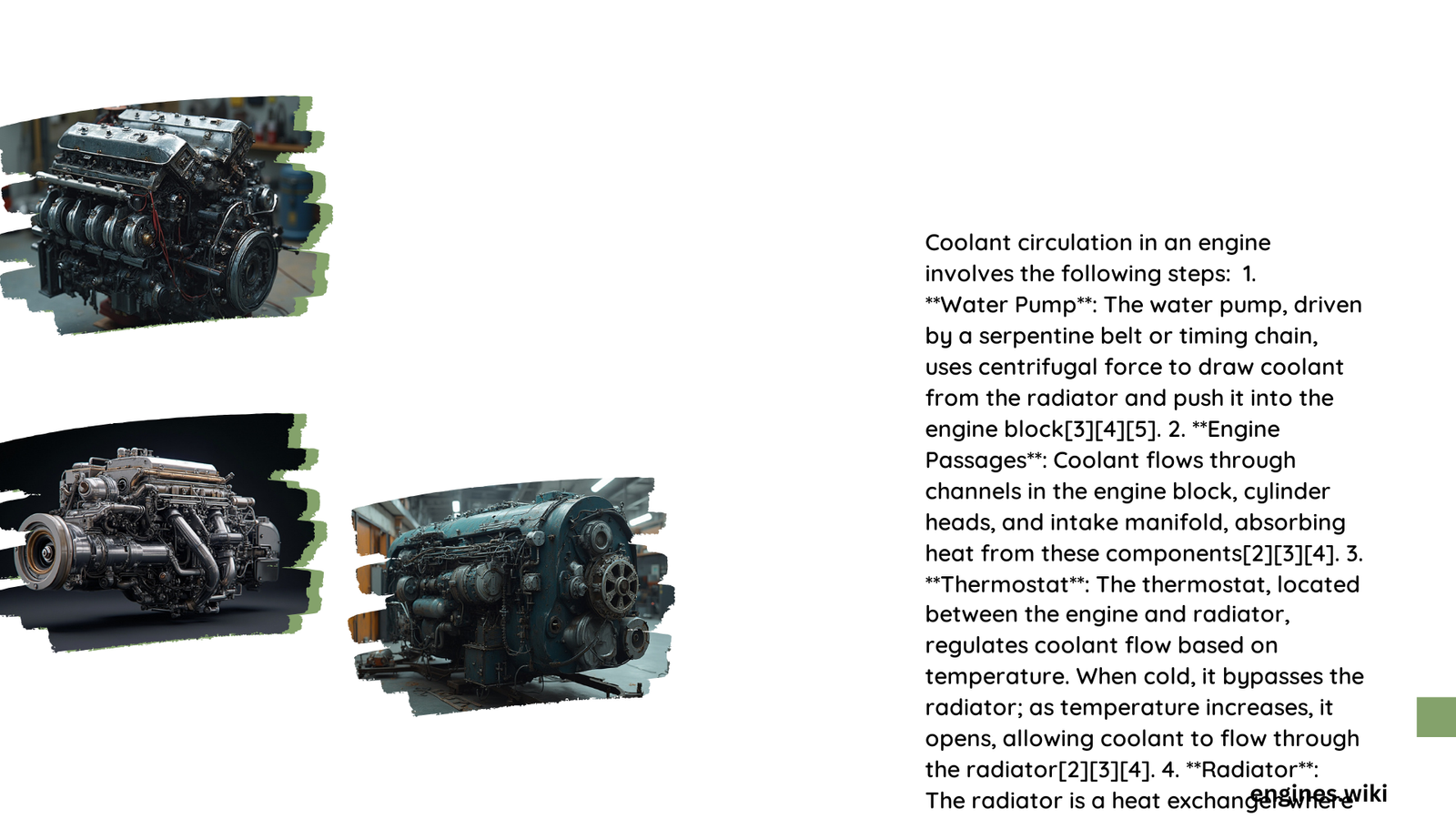Vehicle engines generate immense heat during operation, requiring a sophisticated cooling system to prevent mechanical failure. The coolant circulation process is a critical thermal management mechanism that involves precise movement through interconnected components, transferring heat from engine components to the radiator, ensuring optimal engine performance and preventing potential catastrophic overheating scenarios.
What Is the Primary Purpose of Coolant Circulation?
Coolant circulation serves multiple crucial functions in maintaining engine health:
- Heat Absorption: Collecting thermal energy from engine components
- Temperature Regulation: Maintaining consistent operational temperatures
- Preventing Overheating: Continuously removing excess heat
- Corrosion Protection: Providing chemical protection for internal engine surfaces
How Does the Water Pump Initiate Coolant Flow?

The water pump acts as the primary driver of coolant circulation, functioning through several key mechanisms:
Centrifugal Force Principles
- Utilizes an impeller to create rotational momentum
- Generates pressure that pushes coolant through engine passages
- Typically driven by serpentine belt or timing chain
Flow Rate Characteristics
| Engine Size | Typical Coolant Flow Rate |
|---|---|
| Small (1.5-2.0L) | 8-12 liters/minute |
| Medium (2.0-3.5L) | 12-18 liters/minute |
| Large (3.5L+) | 18-25 liters/minute |
What Path Does Coolant Travel Through the Engine?
The coolant follows a precise, engineered route:
- Water Pump Entry: Draws coolant from radiator reservoir
- Engine Block Circulation: Absorbs heat from cylinder walls and combustion chambers
- Cylinder Head Passage: Continues heat absorption
- Thermostat Interaction: Regulates flow based on temperature
- Radiator Transfer: Dissipates accumulated thermal energy
- Return to Water Pump: Completes circulation cycle
Why Is the Thermostat Critical in Coolant Circulation?
The thermostat serves as a temperature-sensitive valve with precise operational parameters:
- Opening Temperature: 180-195°F (82-90°C)
- Bypass Mechanism: Redirects coolant when temperature is insufficient
- Flow Control: Prevents premature radiator circulation
- Temperature Stabilization: Maintains consistent engine operating conditions
What Challenges Can Disrupt Coolant Circulation?
Potential circulation disruptions include:
- Pump Failure: Reduced or stopped coolant movement
- Thermostat Malfunction: Improper temperature regulation
- Coolant Leaks: Reduced system pressure
- Blockages: Restricted flow through passages
Technical Insights on Heat Transfer
Coolant circulation relies on fundamental thermodynamic principles:
- Specific Heat Capacity: Water-based coolants efficiently absorb and transfer thermal energy
- Thermal Conductivity: Enables rapid heat movement from engine components
- Pressure Dynamics: Influences boiling and freezing points of coolant mixture
Maintenance Recommendations
To ensure optimal coolant circulation:
- Perform regular coolant system inspections
- Replace coolant according to manufacturer specifications
- Check for leaks and system pressure
- Monitor coolant color and consistency
Conclusion
Understanding how coolant circulates in the engine provides critical insights into vehicle thermal management, highlighting the complex interplay between mechanical components and thermodynamic principles.
